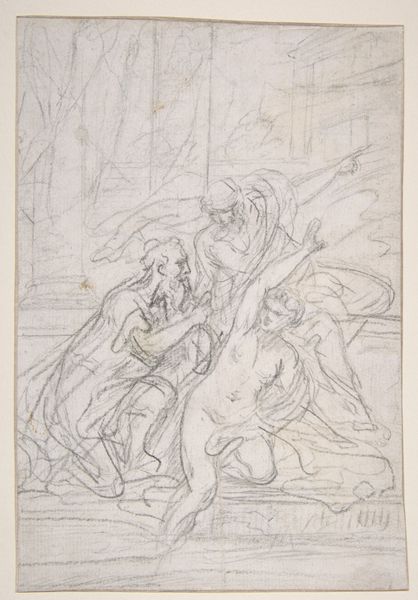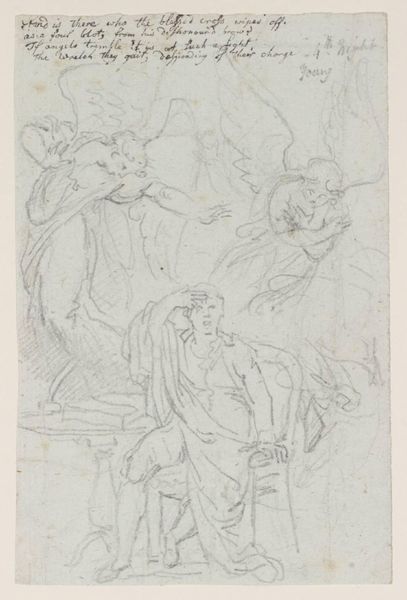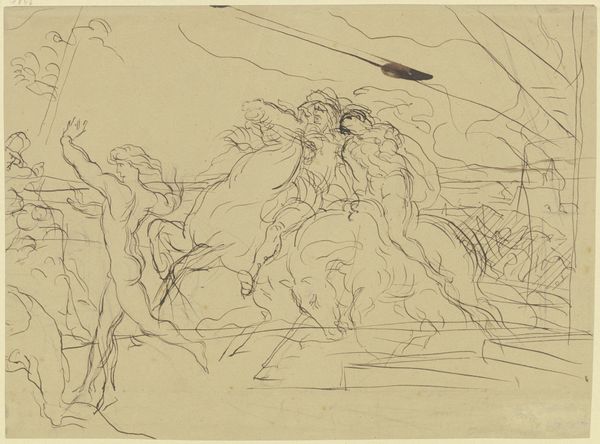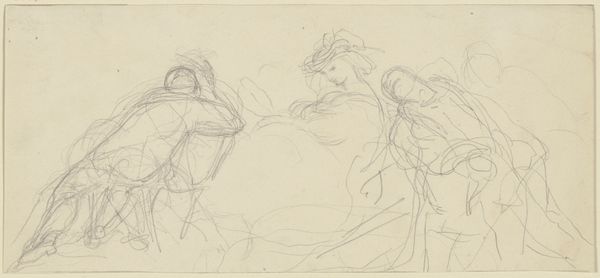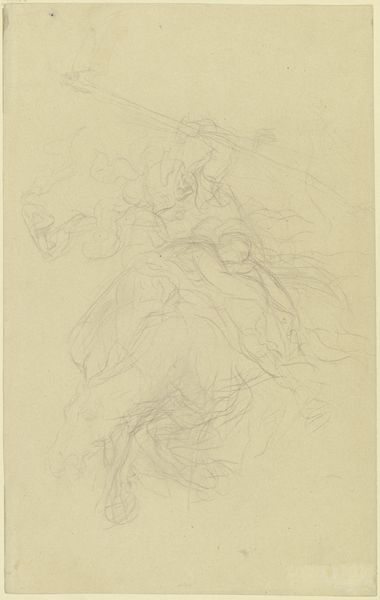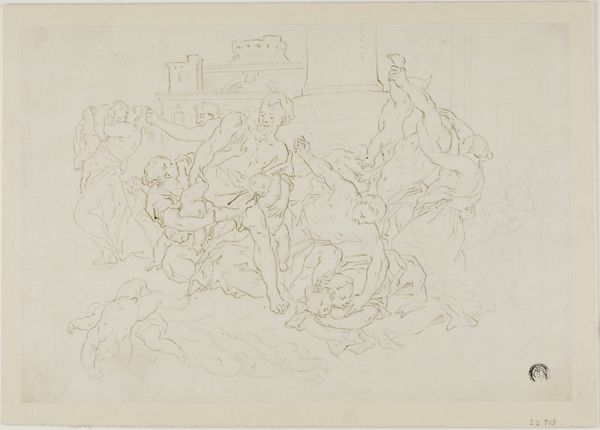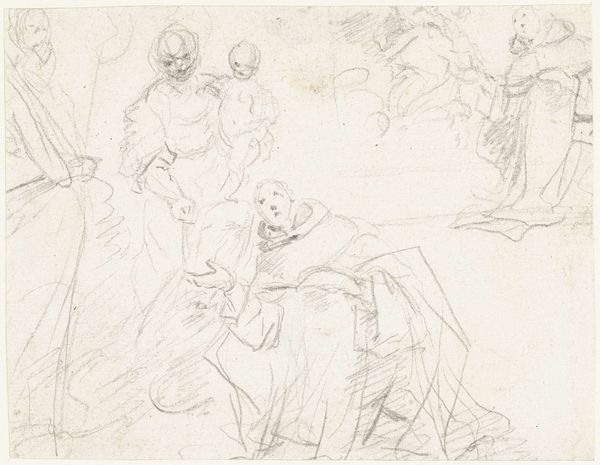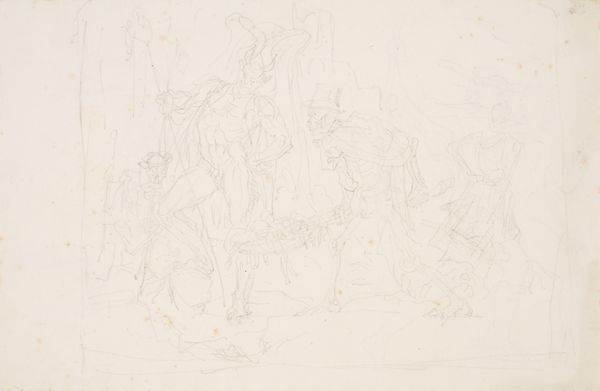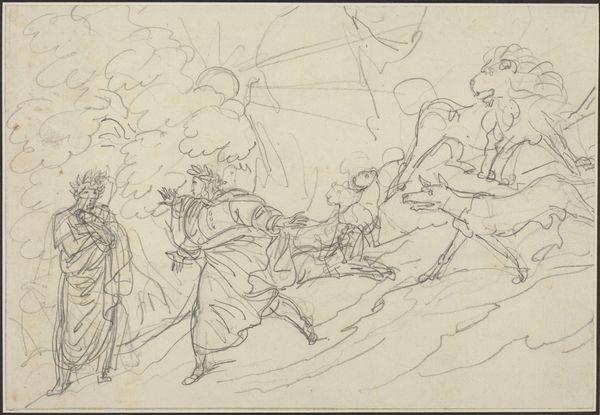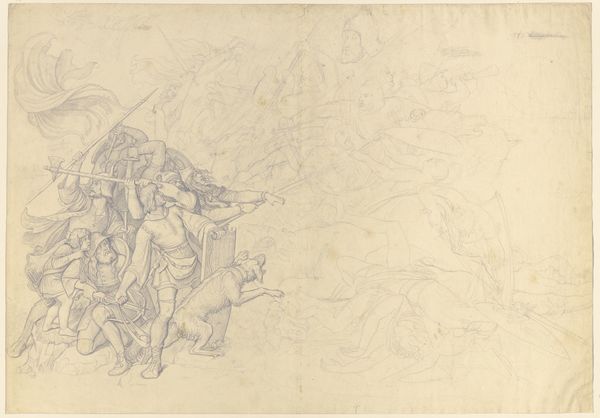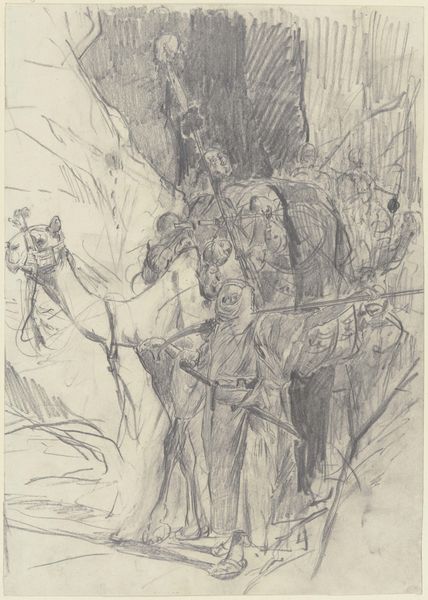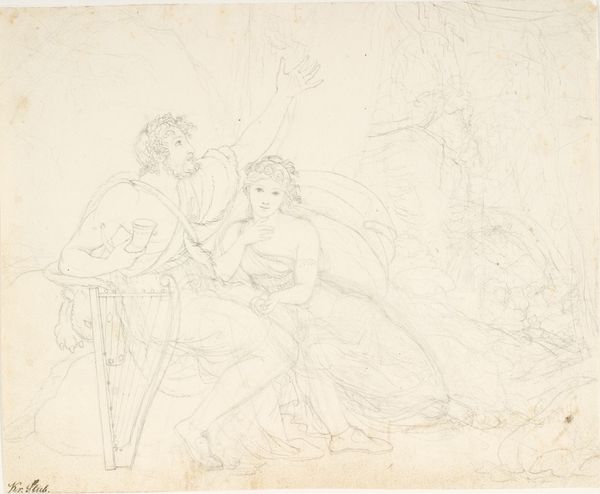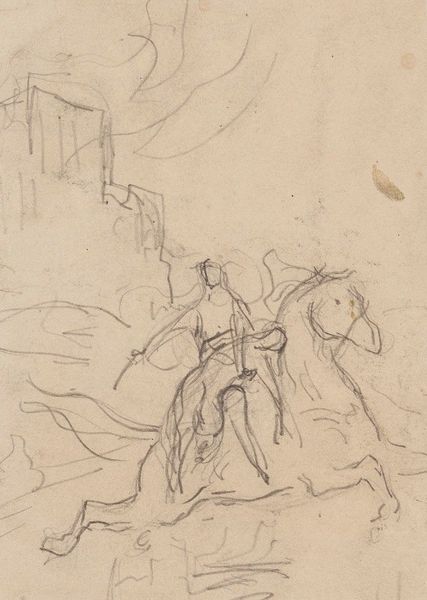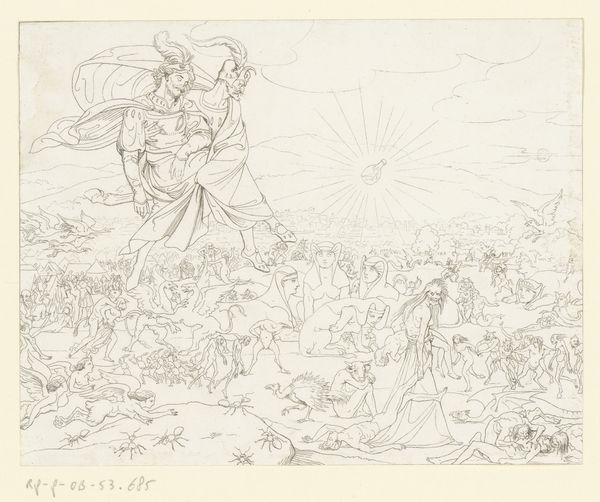
drawing, paper, pencil
#
drawing
#
imaginative character sketch
#
light pencil work
#
narrative-art
#
pencil sketch
#
landscape
#
figuration
#
paper
#
personal sketchbook
#
idea generation sketch
#
sketchwork
#
ink drawing experimentation
#
romanticism
#
pencil
#
line
#
sketchbook drawing
#
history-painting
#
sketchbook art
#
initial sketch
Dimensions: height 228 mm, width 308 mm
Copyright: Rijks Museum: Open Domain
Curator: Looking at "The Flight of Dido and Aeneas," a pencil drawing by Anne-Louis Girodet, created sometime between 1777 and 1824, I'm struck by its ethereal quality. It feels incomplete, raw. Editor: Absolutely, it has a tentative, dreamlike feel, doesn't it? The composition seems caught between classical structure and a more expressive, almost Romantic sensibility. How does the narrative element work here? Curator: Given the historical context, it's compelling to consider how Girodet positions the powerful woman Dido and Trojan hero Aeneas in relation to empire and duty. He's depicting a crucial moment where personal desires clash with destiny—a very popular theme during the rise of nationalism. Editor: Interesting. And on the materials level, we have a drawing in pencil on paper. Its sketch-like nature pulls back the curtain on artmaking. What can we deduce about Girodet's working process? Was this likely made for himself, or to be viewed by the public? Curator: Probably the former, right? This likely lived in a sketchbook or portfolio. Think about the availability of materials during this period. The type of paper used, the quality of the pencil…these details speak to Girodet's social standing and artistic training. There is no vibrant colors to impress. Editor: It makes me think about the relationship between labor and finished product in art, this tension between what is perceived as "high art" and something that stems from experimentation. Curator: Exactly. The work reveals the mechanics, the physical act of creating imagery within particular sets of materials and tools, allowing for reflection on its context. This allows us to see its function within art education. Editor: Thinking about its public reception today, what do you make of displaying studies that, presumably, the artist didn't intend as final presentation pieces? Curator: It disrupts traditional hierarchies. Putting a drawing like this on display in the Rijksmuseum offers audiences insight into artistic process while suggesting value in what was previously viewed as preparatory work. Editor: It does invite an element of immediacy and intimacy—it shows art is never purely a romantic gesture, but the output of time and effort. The pencil itself is a powerful artifact, wouldn't you agree? Curator: Indeed! Thank you. Editor: My pleasure.
Comments
No comments
Be the first to comment and join the conversation on the ultimate creative platform.
